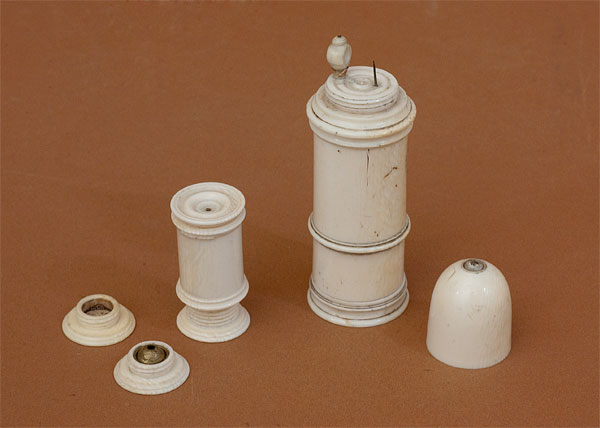 |
|||||
 |
 |
||||
 |
|||||
 |
 |
||||
Ivory Microscope Compendium (No. 111) |
|||||||
 |
|||||||
| Age: c1710 Made by: unknown Made in: possibly Italy |
|||||||
|
This instrument was developed early in the history of microscopy. It consists of three magnifying devices in a single, segmented structure made from ivory. Systems like this are sometimes called an "Optical Compendium" due to the fact that they consist of several, independent magnifying devices. The simple magnification optic (at the top) also is called a "microscopium pulicare," or "Flea Microscope," since one of the specimens examined at the time was the ubiquitous flea. The other microscopes are an interior low magnification loupe, and a hand-held screw-barrel microscope. This last microscope is unusual in that there is no obvious mechanism for holding a sample near the objective lens. One possibility is that the two plano-concave glasses found under the inner retaining ring formed a specimen holder. Once assembled, the specimen would then be put into focus by turning the inner cylinder. The main body consists of several sections: a base for storing the objectives for the hand-held magnifier, a middle section, which is the low magnification loupe, and the top section that holds a small lens (missing in this microscope) and a vertical specimen mounting pin. The final section is a cap, which screws down over the specimen holder section to protect the optics. This particular specimen is fragile, and thus cannot be separated safely to show the large, low magnification lens. Completely assembled, its height is 9cm with cap, 7cm without cap. Microscopes similar to this one can be found in the Billings Collection, the Van Heurck Collection, and the Museum Boerhaave. |
|||||||
Featured 11/2005, 02/2010